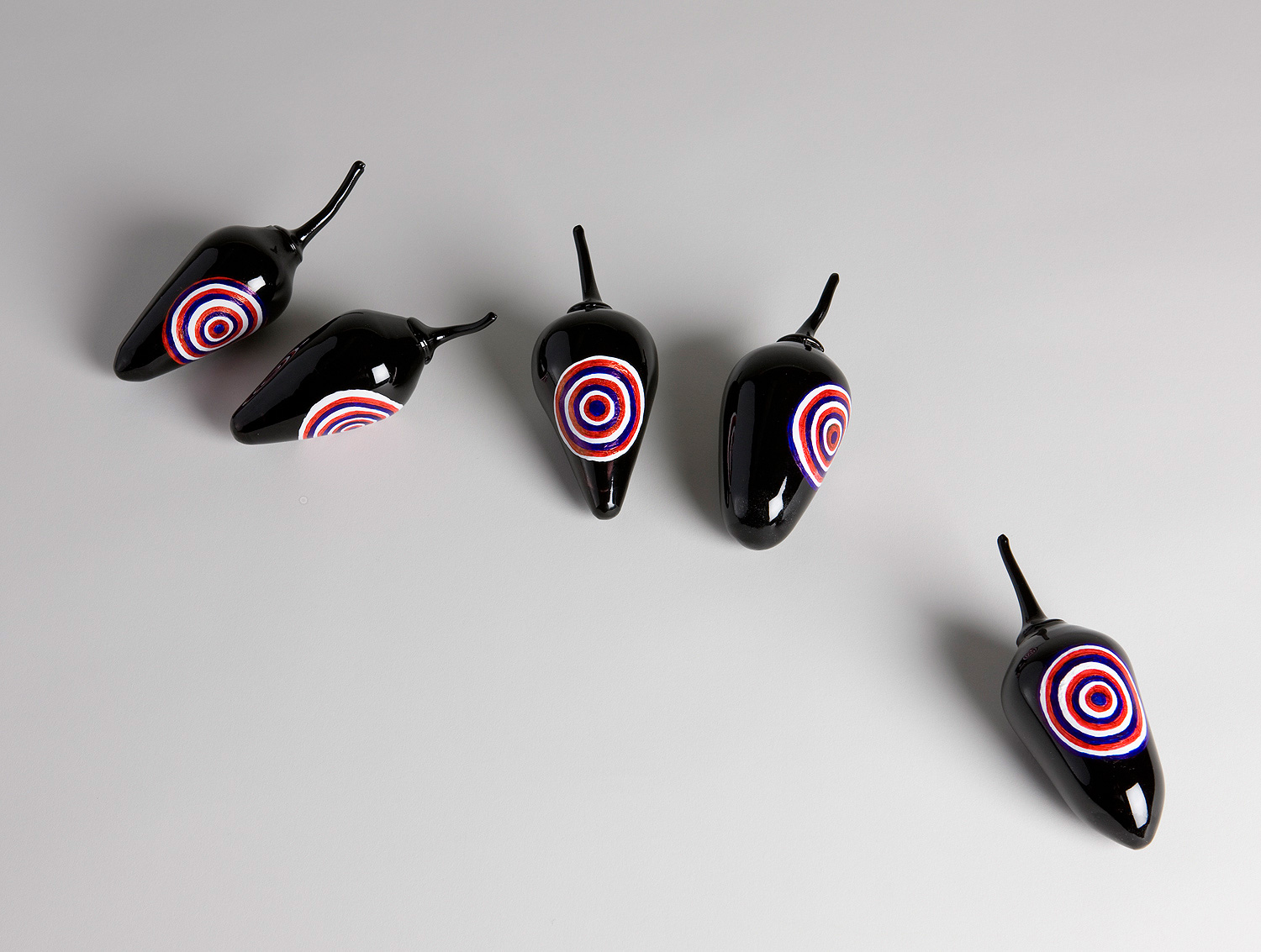Aboriginal artist Yhonnie Scarce (Kokatha/Nukunu) will visit the University of Virginia for an artist residency Sept. 1 through 15. “What They Wanted,” an exhibition of her works in glass and other media, will be on view at the Kluge-Ruhe Aboriginal Art Collection Sept. 11 through Dec. 30.
Scarce’s residency will include an artist talk on Sept. 5 and a public reception with the artist on Sept. 14. Aboriginal curator Tess Allas will give a guided tour of “What They Wanted” on Sept. 15 . Scarce also will lecture to several classes at U.Va.
Scarce was born in Woomera in South Australia and is a member of the Kokatha and Nukunu peoples. She holds a bachelor of visual arts from the University of South Australia and a master of fine arts from Monash University in Melbourne.
Her work has been exhibited throughout Australia, and she recently traveled to New York for an exhibition at the Museum of Contemporary African Diasporan Art. She has completed several public art projects, including a Melbourne Laneway Commission work titled “Iron Cross.” Her work is held in numerous public collections in Australia, including the National Gallery of Victoria, the Art Gallery of South Australia and the Museum and Art Gallery of the Northern Territory. She is represented by Diane Tanzer Gallery in Melbourne.
Her visit is part of the Kluge-Ruhe Collection’s artist residency program, which ensures the continued success of the program through 2015 thanks to a $30,000 grant from the Australia Council for the Arts, the Australian government’s arts funding and advisory body. Each year, the council delivers more than $160 million in funding for arts organizations and individual artists, seeking to build new audiences through collaborative initiatives.
The new grant to the Kluge-Ruhe Collection will enable Aboriginal and/or Torres Strait Islander visual artists to undertake month-long residencies at the University from 2013 to 2015.
“The thing that differentiates the Kluge-Ruhe residency is the opportunity for indigenous Australian artists to engage with students and faculty and be integrated into the academic community at a leading public university in the U.S.,” Kluge-Ruhe director Margo Smith said. “The work they produce in collaboration with students at U.Va. becomes part of a global dialogue, driving our knowledge and understanding of contemporary art.”
Vice Provost for the Arts Elizabeth Hutton Turner said, “This is really something to celebrate. This grant gives our students a unique opportunity to learn from artists who are reengaging with their own cultural heritage through the collections of objects and archives at the Kluge Ruhe Museum and creating dynamic new work.”
Residencies typically include an exhibition at the Kluge-Ruhe Collection, a public artist talk or lecture, teaching and demonstration of work in studio art or other courses at the University, the production of new bodies of work and engagement with the general public through tours and receptions.
Artists apply to Australia Council to become a resident artist at the Kluge-Ruhe Collection. An assessment panel submit a list of finalists to the Kluge-Ruhe Collection for final selections.
Launched in 2011 with seed money from U.Va. Arts Council, the Kluge-Ruhe artist residency program has brought some of Australia’s leading artists to the University, including Judy Watson, Ricky Maynard and Vernon Ah Kee.
Media Contact
Article Information
August 31, 2012
/content/grant-ensures-success-kluge-ruhe-collections-resident-artist-program

